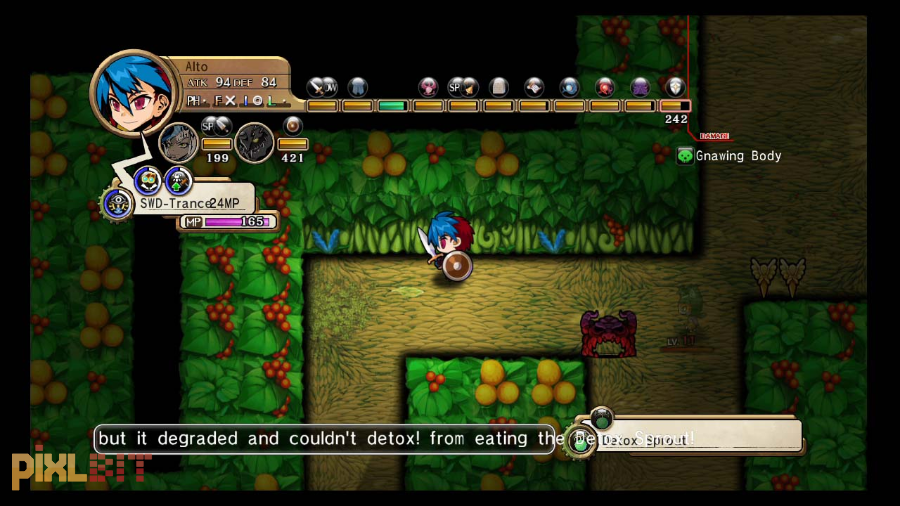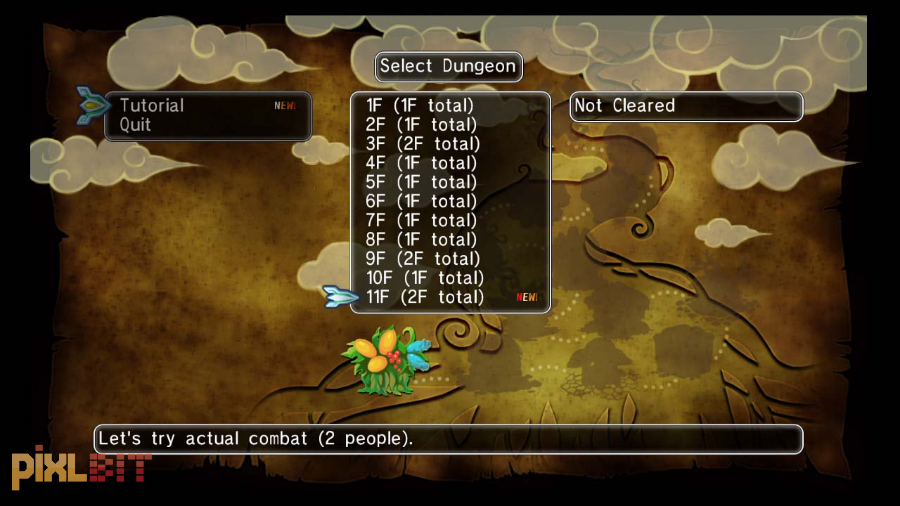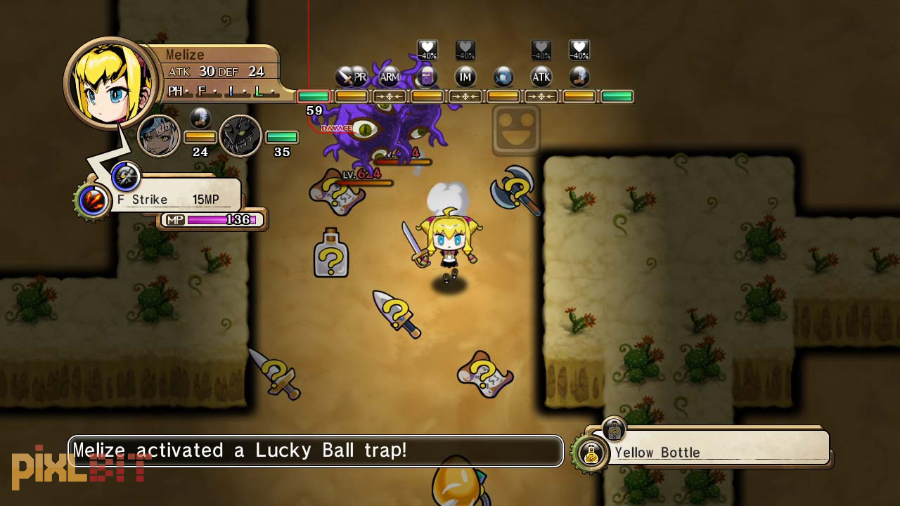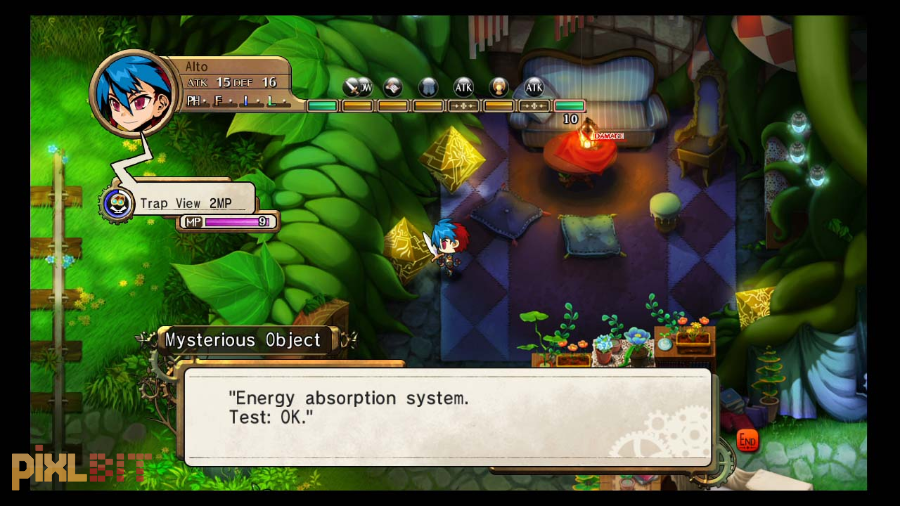Legasista Review
|
|
See PixlBit's Review Policies

On 10/11/2012 at 12:00 PM by Patrick Kijek The menu system is about as tough as saying the name of this game correctly. |

The game is a decidedly middling title in its genre, with nothing really original to add. Refining all of the elements in a JRPG to an average level, it should be seen as an average video game overall.
When given the opportunity to play a new game by NIS Software, the role playing game player has to jump at the opportunity. With such inventive, intellectual properties in the genre, it would be difficult to see a lackluster effort coming from the creators of the Disgaea series. But, I'm sorry to say, Legasista happens to lack lust. Compared to the flagship franchises from NIS, it has a poorly paced storyline and a dearth of new gameplay ideas.
Legasista begins with a promising predicament for the protagonist, Alto, that places his sister in a crystal with no way out. The backstory begins with a summary of how the people have come to fear technology as if it were ancient magic. Of course, technology sleeps in the very place where the protagonist must go to return his sister to humanity. Nobody has stepped into this tower -- The Ivory Tower -- for 1000 years, which explains why the woman he meets, Ms. Dungeon, and the tower itself have such cliché names. Even though the names are cliché, touches like this give the JRPG a wonderful campy vibe. In typical NIS fashion, it remains a breath of fresh air to not have to take the journey so seriously.
So how will Alto transform his sister? Following the promising backstory, the plot meanders into a lot of character development and trust issues. A couple of the female sprites do have enough depth to their character to question how their relationships will pan out with Alto. But the main plot does not have much development throughout the 10-15 hour story. This could be the game’s major flaw, yet some players may enjoy roaming around with no clue as to why they are leveling their party. Mostly, this game is role playing for the sake of role playing. In fact, all we really know until the end is that the answer to freeing her body from imprisonment could be held in the ancient research tower binding all of the characters together.
An ancient weapon, a mysterious set of supporting characters and an environment where technology has been banned for a thousand years... with a ripe backstory like this, it would have seemed appropriate to delve into dilemmas like the hold that technology has on its consumers or the toll that research takes on characters living a thousand years or more. Instead, most of the story simple devotes itself to whom hurt another character’s feelings.
For some of the musing into Alto’s or Melize’s or Mimily’s feelings, it can humanize a stilted cast of characters. Even so, many of the cutscenes with humanizing elements tend to go on much too long, which breaks up the pace of a speedy dungeon crawler. Strangely, the plot introduces integral characters to join your party for the development of the love story well into the third act, which seems way later and an unnecessary way to elongate the story. Instead of throwing in more characters, they should have developed the intricacies of the unique setting. And maybe they should have provoked the party with something undeniably evil earlier than the last two dungeons, so the player would feel a sense of finality during the final battle.
In many cases, focusing on unrequited desire such as this could feel heartwarming, yet most of the stationary sprites hardly implore the gamer to care. Maybe the cheap price point of 15 dollars online should be blamed for this lack of imagination, or maybe the lack of imagination brought on the cheap price, since the level design can become repetitious, and somehow random as well.
Each of the floors in the dungeons look beautifully vibrant, yet common in structure. Unfortunately, the system of generating “ran-geons,” where all of the floors in a dungeon are made randomly, lends itself to plain and repetitious floors. Most of the patterns on the walls of the levels are simply interchanged with either expanding or contracting walls. To the benefit of the main storyline, more puzzles are dispersed throughout the campaign. If only some of the puzzles could have been randomly generated more often.
The biggest puzzle in the ran-geons manifests itself in the form of the exits. Ranging from 30-100 floors and differing in difficulty depending on where the player digs a hole in the world map (called The Railyard), the most difficult part of each floor to swallow has to be the luck involved when ascending to the next floor in the dungeon. After you choose to exit through one of the arches on each floor, a random role decides what level the monsters and item drops will be on the next level. Each of these roles represents a huge gamble. Sometimes it will pay off with amazing items, but most of the time, one bad role evolved the monsters 50-100 levels. This makes the rest of the dungeon almost impossible, and nothing in the player's power can be done to change the random result.
The customization, on the other hand, does give much power to the player. For aesthetic purposes, character customization allows the player to create their own character from scratch. The customization goes from the characters’ abilities down to the sprite. In addition to the customization for the character, the weapons and abilities blow the customization away. Once the player figures out what all of the abbreviations for weapon effects mean in the menu, possibly the deepest weapon and ability customization becomes usable.
I will say that again: this game includes more customization in weaponry and ability than almost any other game on the market. In addition to leveling up all of your characters’ abilities manually, the option to mix the effects of each weapon or accessory (called main-titles and sub-titles) is available by discarding outdated equipment and storing subtitles in one of the menus.
In addition to the ability to auto-equip the strongest weapon, the player can use effects from one weapon to aid in the creation of another weapon. In a sort of blacksmithing or alchemy that allows the abilities of one weapon or piece of armor to be used with another weapon, players will have a cornucopia of possibilities available to themselves. While this portion of the game is not required to complete the storyline, the ran-geons will be tough to survive without getting the attributes of each weapon exactly correct.
Of course, the ran-geons are not connected to the main storyline in any way, other than the fact that a character gives you a shovel to dig for ran-geons in the Railyard, which is literally the only place reserved for exploration in the entire game. The rest of the game takes place in menus (hope you enjoy spreadsheets). The only other points to having your world map, i.e. The Railyard, exhaust themselves quickly. Either looking at mysterious objects with no significance except to clutter the world map, or watching your sprouts (talking beans with funny personalities peppered throughout the map) grow, can only hold a gamer’s attention for a few moments.
Instead of risking an expensive dub in English, the developers decided to simply subtitle the entire game. Fans of japanese animation should flock to this title, as well as those who want to be refreshed with the dialogue of Japanese culture. Despite all of its shortcomings and lack of originality, it is this attention to tradition that roots Legasista in a decidedly decent JRPG recommendation.
If you are a fan of the genre, Legasista is a game that can fill the void of JRPGs on your Playstation 3 at a value price. Whether or not you feel like spreadsheets would ruin an otherwise fast-paced role-playing game is the most important question which you should ask yourself. It is surely a deterrent for someone like myself, who would prefer for the game to pick either a quick or slow pace. If budget JRPGs attempting to mould a quick and slow pace into a free-flowing game sound like an appetizing attempt at a video game, then you should surely give this one a try.













Comments